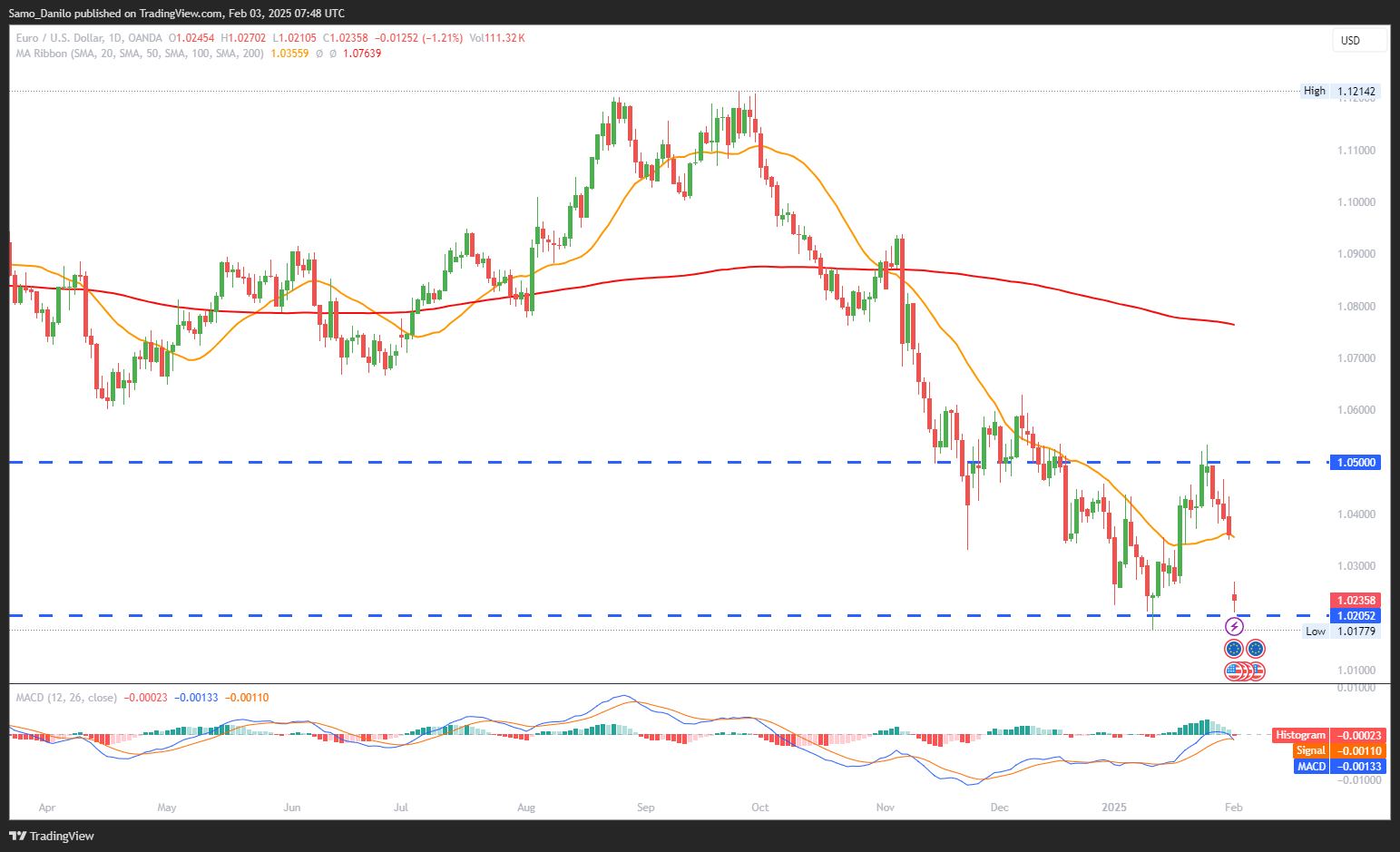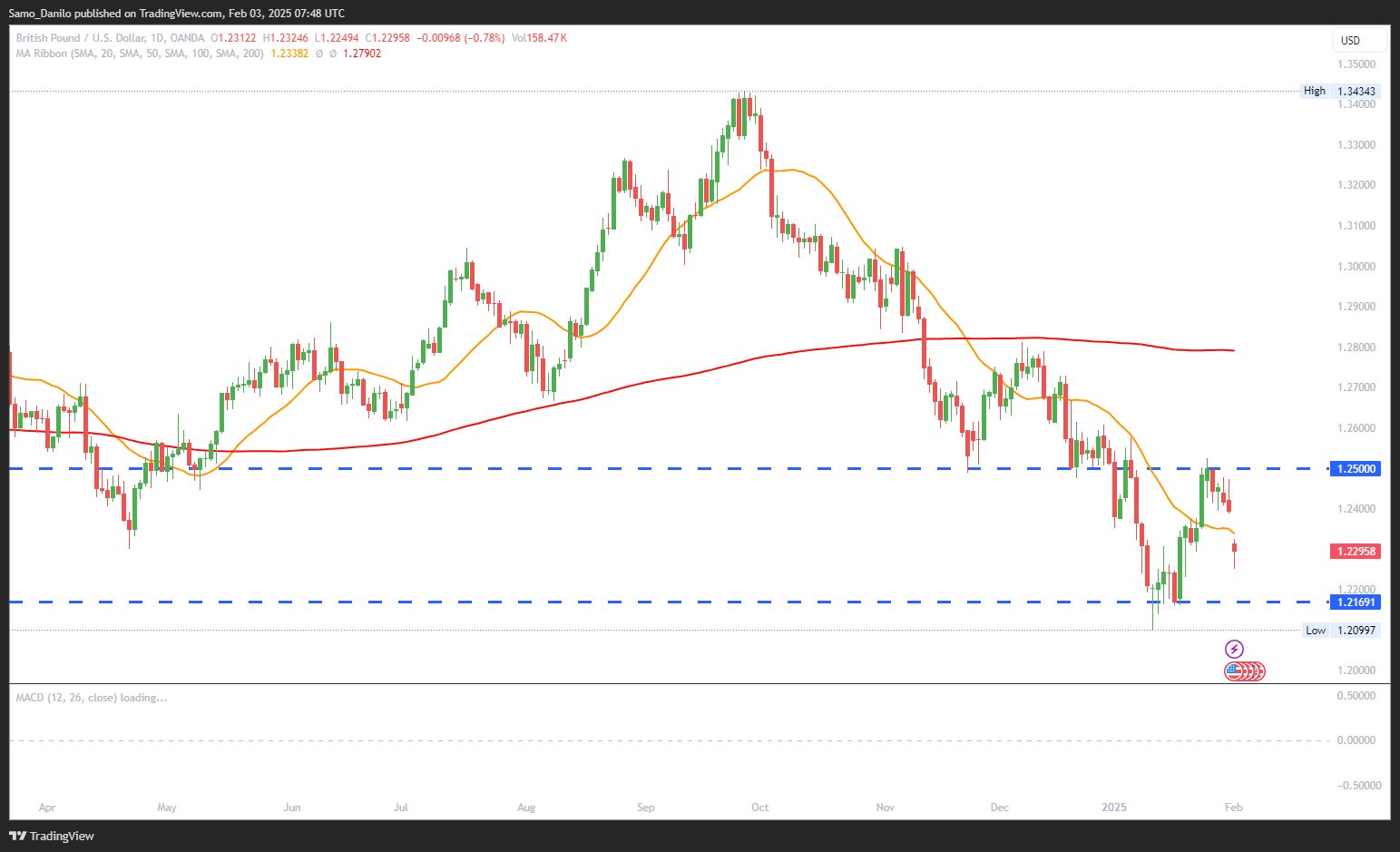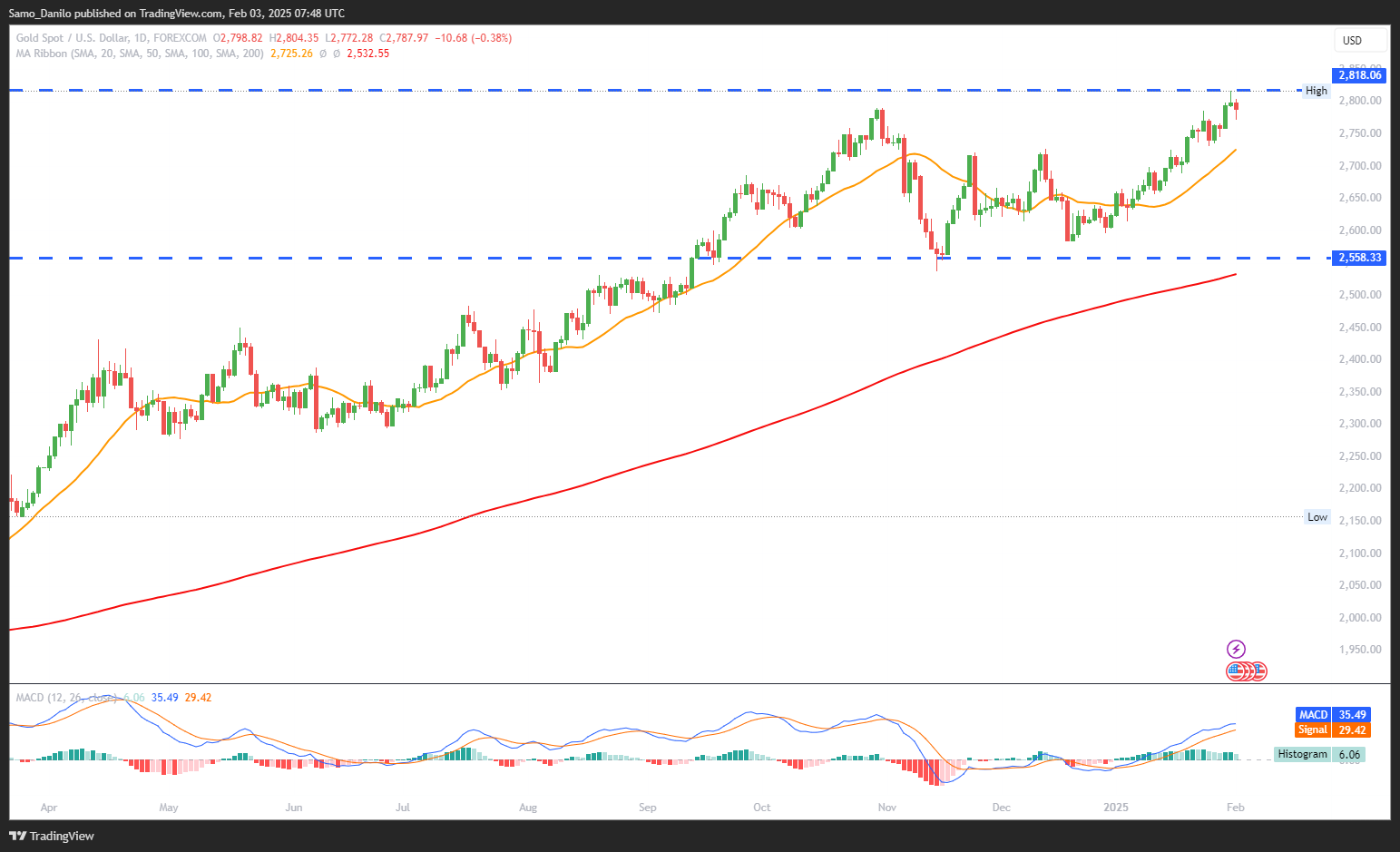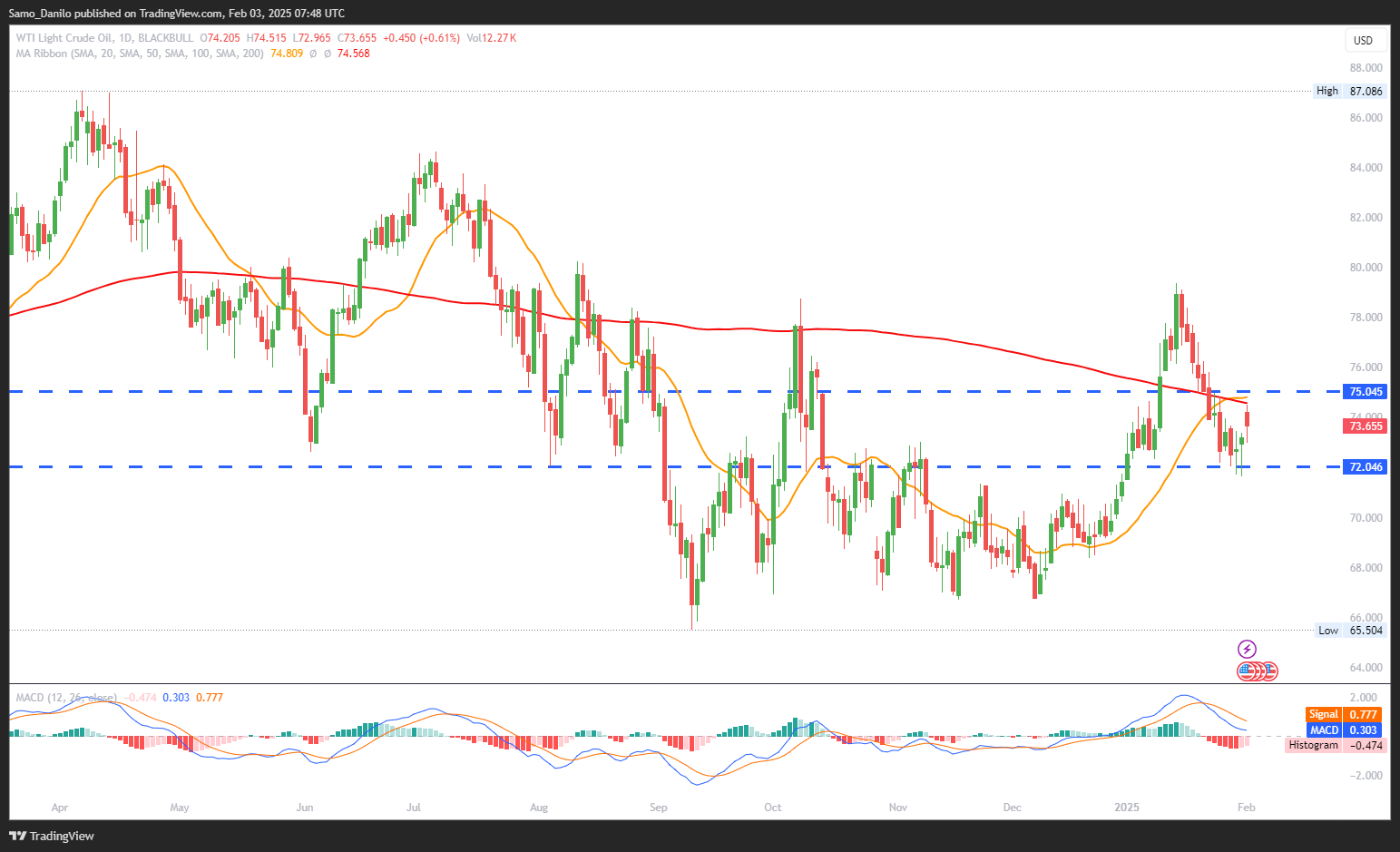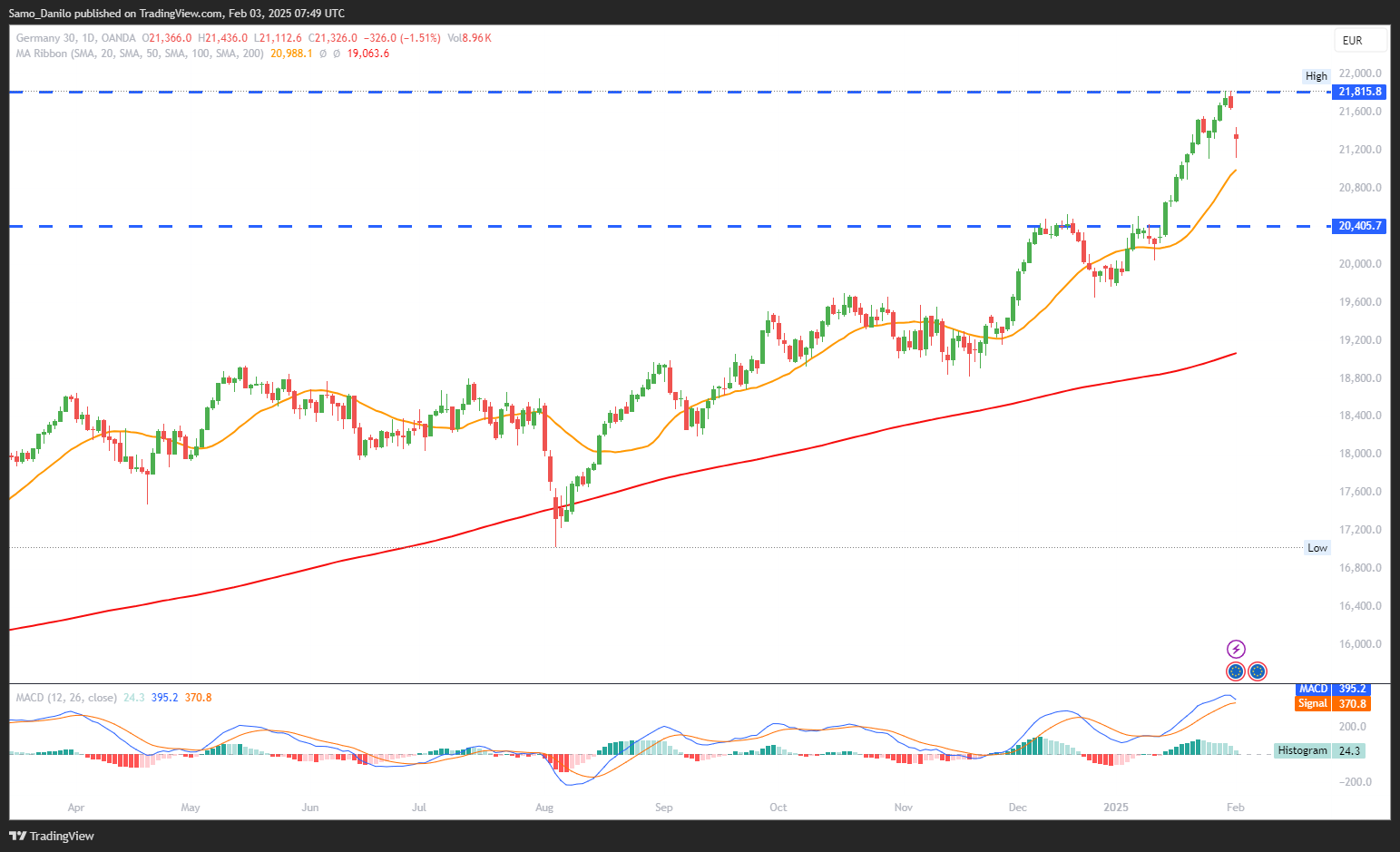EURUSD
- EUR/USD Price: The EUR/USD pair continues its downward trend, which began on January 27, trading around 1.0245 during Monday’s European session. The pair remains under pressure as the US Dollar surges on renewed trade tensions.
- Trump’s Tariffs: US President Donald Trump announced over the weekend that he would impose 25% tariffs on imports from Canada and Mexico, along with an additional 10% duty on Chinese goods. Trump also confirmed plans to target the European Union with trade restrictions, further fueling market volatility.
- Inflation Fears: Market analysts view Trump’s aggressive tariff stance as a strategic economic measure that could drive inflation higher in the US, potentially influencing Federal Reserve policy decisions later in the year.
- German Inflation Data: The German Consumer Price Index (CPI) for December fell by 0.2%, missing market expectations of a modest 0.1% increase. The weaker inflation report adds to concerns about the Eurozone’s economic outlook.
- ECB Policymaker: Estonian Central Bank chief and ECB policymaker Madis Muller stated on Friday that it is realistic for inflation to reach the ECB’s 2% target by mid-2025, reinforcing expectations of further rate cuts.
Closing statement: EUR/USD remains under pressure as Trump’s tariffs drive US Dollar strength, while weak German inflation data adds to Eurozone concerns. Traders will watch for further trade policy developments and ECB commentary for near-term direction.
GBPUSD
- GBP/USD Price: The GBP/USD pair continues its downward trend, trading around 1.2290 during Monday’s European session. Persistent US Dollar strength, fueled by trade tensions and economic data, keeps the Pound under pressure.
- US Tariffs: Over the weekend, the US announced a 25% tariff on Canadian and Mexican imports, with an additional 10% duty on Chinese goods. Canadian energy exports will also face a 10% tariff, adding to market uncertainty.
- US PCE Index: The Personal Consumption Expenditures (PCE) Price Index, the Federal Reserve’s preferred inflation measure, rose 0.3% MoM in December, up from 0.1% in November. The data reinforces expectations that the Fed may delay interest rate cuts.
- BoE Rate Cut: The British Pound remains under pressure as traders anticipate the Bank of England (BoE) will resume its rate-cutting cycle, with a 25-basis-point cut to 4.5% expected in February.
- Upcoming Events: Investors are closely watching the BoE’s monetary policy decision next Thursday, with expectations that policymakers may adopt a dovish stance, given recent signs of slowing inflation, despite continued wage growth acceleration.
Closing statement: The GBP/USD pair remains vulnerable as US tariff announcements strengthen the Dollar, while BoE rate cut expectations weaken the Pound. Traders will look for further guidance from central bank comments and economic data releases.
XAUUSD
- Gold Price: Gold price extends its decline as a broad-based US Dollar rally weighs on the metal. Despite the pullback, the short-term technical outlook remains positive as long as the 14-day Relative Strength Index (RSI), currently at 65.50, holds above the key 50 level.
- US Tariffs: Over the weekend, US President Donald Trump imposed 25% tariffs on Canadian and Mexican imports and a 10% levy on Chinese goods, effective Tuesday. The move, justified as a measure to combat illegal immigration and the drug trade, adds to market uncertainty.
- Global Retaliation: In response, Canadian Prime Minister Justin Trudeau and Mexican President Claudia Sheinbaum announced retaliatory tariffs on US goods. Additionally, China’s Foreign Ministry stated that it would challenge Trump’s levies at the World Trade Organization (WTO), further intensifying global trade disputes.
- Market Reaction: In times of uncertainty, investors typically seek safe-haven assets. However, the market has adopted a "sell everything" approach, favoring the US Dollar over gold as the primary risk hedge. This shift has led to a pullback in gold prices.
- Manufacturing Data: China’s Caixin Manufacturing PMI for January came in at 50.1, barely above the contraction threshold, highlighting concerns over the world’s second-largest economy. Later in the day, traders will look to the US ISM Manufacturing PMI for further direction.
Closing statement: Despite a short-term retreat, gold remains in a strong uptrend as trade tensions and economic uncertainty persist. Traders will closely monitor US economic data and geopolitical developments for further price action cues.
CRUDE OIL
- WTI Oil Price: West Texas Intermediate (WTI) crude oil prices climb toward $74.10 per barrel during Monday’s European session. The rise comes as traders assess potential supply disruptions from Canada and Mexico, two of the largest crude suppliers to the US.
- US Tariffs: The Trump administration’s new tariffs, set to take effect on Tuesday, will remain in place until the fentanyl overdose crisis is "resolved." Canada, Mexico, and China have announced retaliatory measures, escalating global trade tensions and creating uncertainty in energy markets.
- Supply and Demand Concerns: While concerns over potential disruptions in crude supply from Canada and Mexico provide support to oil prices, expectations of weaker global fuel demand limit gains. According to the US Department of Energy, Canada and Mexico together account for about 25% of US crude imports, critical for refining gasoline and heating oil.
- OPEC+ News: The Organization of the Petroleum Exporting Countries and its allies (OPEC+) is facing mounting pressure from the Trump administration to increase output. However, OPEC+ delegates indicated to Reuters that the group is unlikely to deviate from its planned gradual production increase when it meets on Monday.
- Economic Data: Traders will closely watch the US ISM Manufacturing PMI, which is forecast to rise from 49.3 in December to 49.5 in January. Stronger-than-expected data could influence oil demand outlooks and impact market sentiment.
Closing statement: WTI crude oil prices remain supported by supply concerns, though demand uncertainties and OPEC+ output decisions will shape market direction. Traders will focus on US economic data and geopolitical developments for further price action signals.
DAX
- DAX Price: On Friday, the DAX edged up 0.02% to close at 21,732, extending its winning streak to four sessions. The index hit a record intraday high of 21,801 but faced a sharp decline of over 500 points at Monday’s open due to renewed US tariff concerns.
- Market Movers: Infineon Technologies gained 1.97% as semiconductor giant ASML continued its rally following strong earnings. Siemens Energy AG rebounded 1.97% from the DeepSeek-fueled sell-off, buoyed by solid Q1 revenue figures. Commerzbank also advanced by 1.72%, driven by stronger-than-expected profits.
- German Economic Data: Economic indicators continued to highlight challenges for Germany. Retail sales fell 1.6% month-over-month in December, signaling weak consumer demand. Meanwhile, the unemployment rate climbed from 6.1% in November to 6.2% in December, underscoring a sluggish labor market.
- ECB Policy: Eurozone inflation data, set for release on Monday, could influence expectations for ECB rate cuts. Economists forecast a decline in the core inflation rate from 2.7% in December to 2.6% in January, reinforcing the case for more aggressive monetary easing.
- US Tariffs: The White House confirmed that US President Trump will impose import duties on Canada, China, and Mexico starting February 1. The prospect of higher import prices and inflationary pressures weighed on global sentiment, leading to a sharp DAX drop at Monday’s open.
Closing statement: Despite reaching record highs last week, the DAX faces near-term headwinds from weak domestic economic data and escalating US trade tensions. Traders will watch ECB policy signals and inflation figures for further direction.
